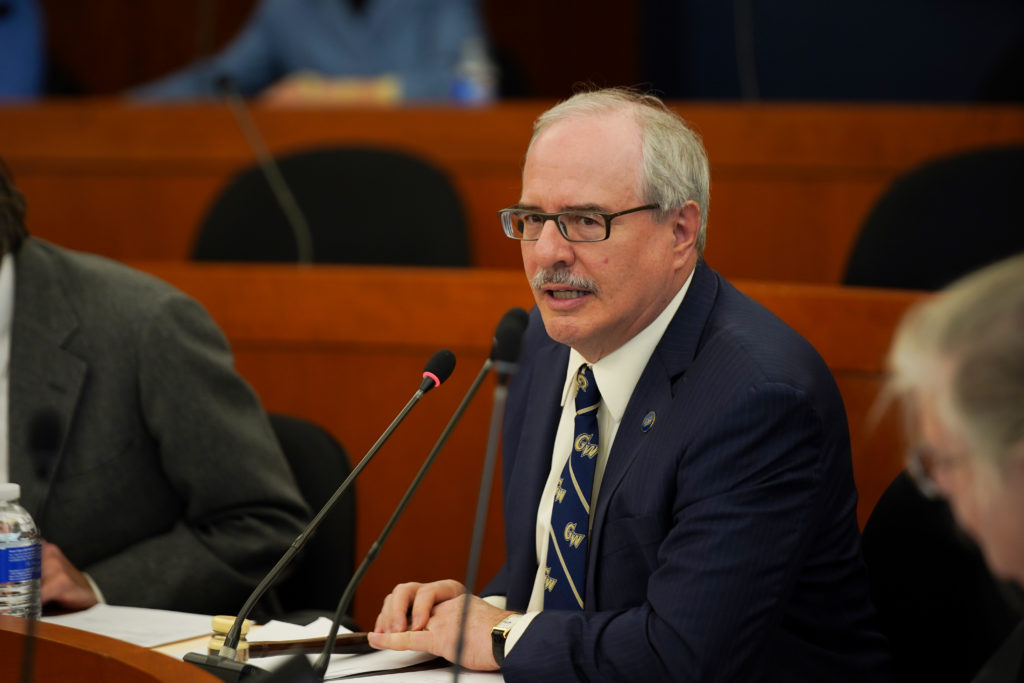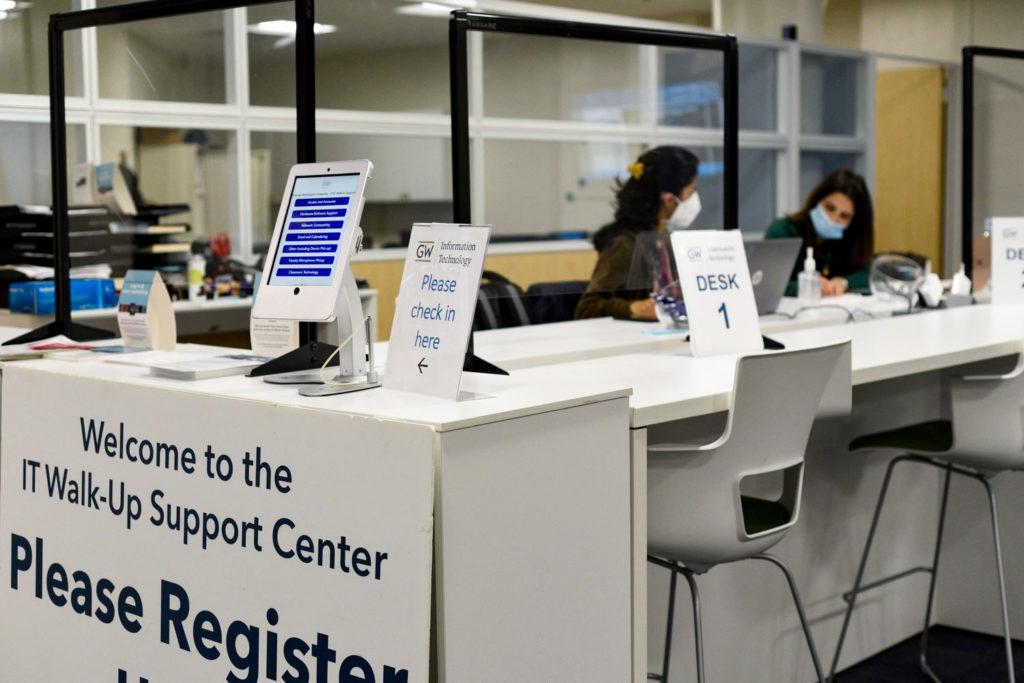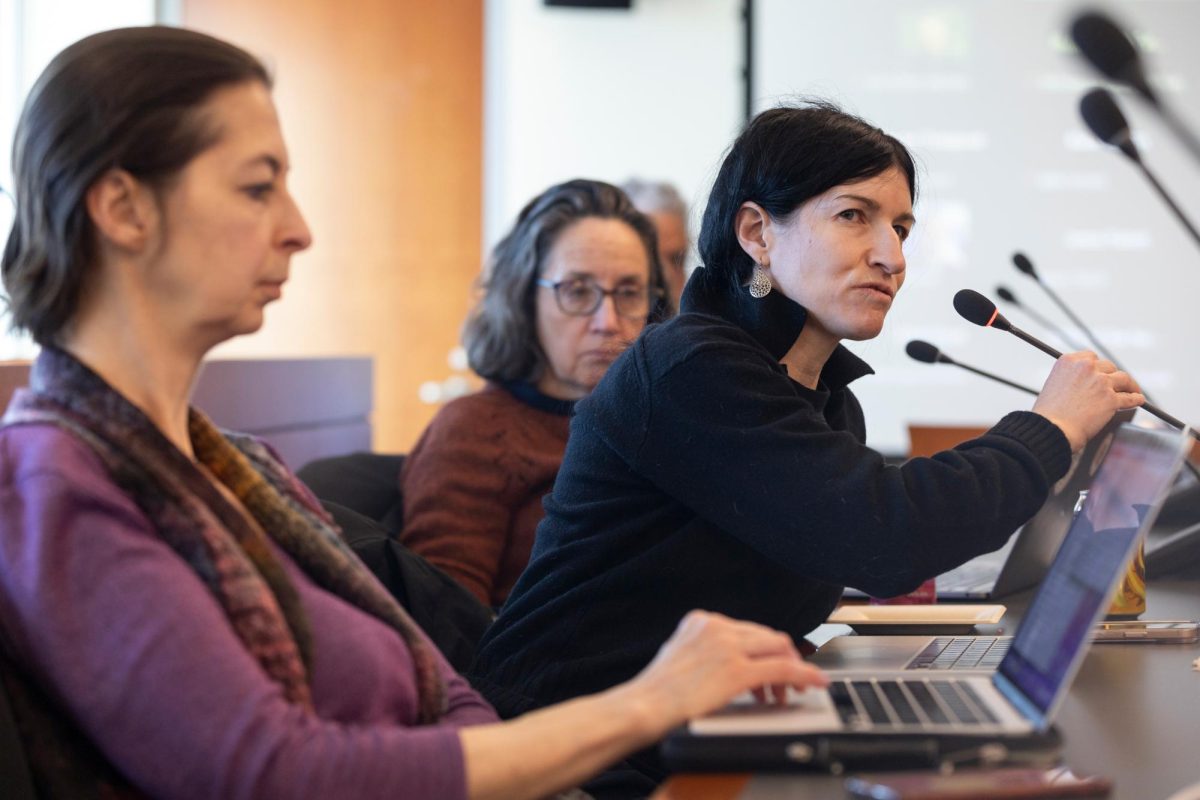Administrators have been grappling with the financial impact of the pandemic on the University for months. But now, officials say they have identified the cuts needed to close GW’s projected budget gap.
University President Thomas LeBlanc announced to employees late last week steps that will be taken as part of the second and final phase of financial mitigation, which will include reductions of non-recurring expenses and use of the University’s unrestricted assets. GW’s annual budget gap is currently projected to reach $160 million this year in addition to an estimated $45 million in lost revenues last fiscal year, which ended June 30.
“Barring a significant change in the pandemic and its impact, we believe that these final steps will conclude our budget mitigation for this fiscal year,” LeBlanc said in an email, which was obtained by The Hatchet, to employees Thursday.
Since the pandemic began affecting the University’s operations in March, officials have stressed that financial projections are subject to change until more information becomes available about enrollment and the ability to bring students back to campus. Total undergraduate enrollment fell sharply this year based on preliminary estimates, and administrators began meeting this month about spring operations.
[gwh_image id=”1127684″ credit=”Sidney Lee | Graphics Editor” align=”none” size=”embedded-img”][/gwh_image]
March
Days after students started taking classes online following spring break, administrators began implementing the first phase of financial mitigation.
Officials announced on March 25 they would suspend most capital projects and hirings, the first public action taken to reduce expenses. Administrators had previously suspended non-essential international travel and urged employees to delay all domestic travel out of health concerns, which also led to savings.
April
In early April, LeBlanc provided the first known estimate of the pandemic’s financial impact on the University. Officials anticipated a $25 million loss from the original fiscal year 2020 budget, driven by a $45 million annual revenue shortfall.
The projection did not account for the impact of the pandemic on the University’s medical enterprise. The GW Hospital temporarily suspended elective surgeries to allocate more resources toward COVID-19 patients.
On April 27, officials announced they would freeze all employee salaries and top administrators, including LeBlanc, would take a pay cut.
At the time, LeBlanc said administrators were not planning any “immediate” layoffs and would only do so if “necessary.”
The Faculty Senate subsequently requested layoffs be used only as a “last resort.” Board of Trustees Chair Grace Speights and LeBlanc said they wouldn’t commit to implementing layoffs only as a last resort, adding that it would only effect administrative support rather than faculty.
May
As the pandemic’s impact persisted, GW’s financial outlook continued to worsen.
On May 8, administrators announced a projected annual revenue shortfall of between $100 million and $300 million for fiscal year 2021, which runs July 1, 2020, through June 30, 2021, depending on when students return to campus. The Board delayed the passage of the fiscal year 2021 budget from its May meeting given the financial uncertainty of the pandemic’s impact.
Officials said during fiscal year 2020, which ended June 30, they projected the $45 million revenue shortfall would yield a net loss of $13 million after running out the University’s budgeted surplus and implementing various mitigation steps.
As officials discussed more drastic measures to close the budget gap, they vowed not to use GW’s endowment, arguing it would jeopardize the long-term financial stability of the University.
“Tapping the endowment or reserves today would not be a prudent decision or in the best interest of GW because it will only hamper our financial standing in the future,” Speights, the Board chair, said at the May senate meeting. “We cannot sacrifice our long-term future to resolve the challenges posed by this pandemic.”
The decision quickly led to criticism from some faculty who said using endowment funds could prevent potential layoffs and other cuts.
June
At the summer’s start, administrators said layoffs were no longer just a possibility – they were inevitable.
On June 4, LeBlanc wrote in an email to Andrew Zimmerman, the then-president of the Faculty Association, saying that officials would be unable to avoid layoffs for “any longer” – marking LeBlanc’s first known confirmation of impending layoffs.
As administrators prepared for layoffs, they continued planning for an in-person fall semester. Officials submitted a plan to the District on June 15 for students to return to campus in August with an extensive testing and social distancing plan.
July
But uncertainty remained as cases began rising throughout the United States during the summer. The new fiscal year began without an annual budget, and the Board instead granted officials temporary financial authority until the financial situation became clearer.
On July 27, administrators announced classes would remain online for the entire fall semester with a 10 percent tuition discount for Foggy Bottom undergraduates, leading to tens of millions of dollars in lost housing revenue and an expected annual revenue shortfall of $220 million.
August
As the end of the summer neared, officials laid off hundreds of staff in administrative units, including the Center for Career Services, technology offices, event departments and academic advising. LeBlanc said at the September senate meeting that officials had laid off about 250 staff members with more expected in the coming days.
Multiple faculty senators met with trustees to discuss officials’ financial mitigation strategy and requested the Board use endowment funds to help close the gap, according to a senate executive committee report. Speights, the Board chair, did not return a request for comment about the meeting through a spokesperson.
Hundreds have called on LeBlanc to resign, citing the layoffs as part of their rationale.
September
As fall enrollment levels became clearer, GW’s projected losses became more optimistic.
LeBlanc said earlier this month that total undergraduate enrollment fell about 7.2 percent this year based on the latest known estimates, significantly better than May expectations, reflecting a $180 million revenue shortfall.
LeBlanc said the “first phase” of GW’s mitigation efforts, which included all budget actions taken through September, reduced expenses by about $100 million, leaving tens of millions of dollars of the budget gap unaddressed. Officials have declined to say how much money was saved by each individual action taken, including staff layoffs.
But LeBlanc said Thursday that updated projections reduced the estimated annual revenue shortfall even further, now estimated at $160 million. The second phase of cuts, which include suspending the University’s base and matching retirement contributions, reducing non-recurring expenses and using up to $20 million of the University’s unrestricted assets is expected to close the remaining gap.
“I anticipate things could get better,” LeBlanc said at a senate meeting earlier this month. “We built in fairly conservative projections, so I don’t see it getting much worse than this.”








